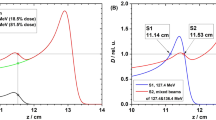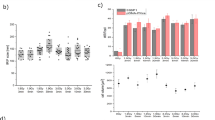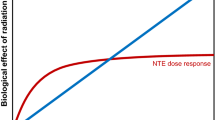Abstract
THE majority of radiobiological reactions are markedly influenced by the linear energy transfer (LET) as well as the dose of ionizing radiation, and comparative investigations at different LET values are important in the methodology of radiobiological research. Irradiation at high values of LET has been achieved most commonly by means of fast neutrons produced in accelerators or reactors. The choice of nuclear reactions for production of mono-energetic neutrons is rather restricted, and even then the LET spectrum in an irradiated material is quite broad because: (a) the initial energies of the ionizing secondary particles range from a maximum value down to zero; (b) a given cell may be irradiated by a secondary particle with any energy from the initial value down to nearly zero. For irradiation of most cells and micro-organisms it is far preferable to use mono-energetic charged particles directly, provided the dimensions of the cells, etc., are small compared with the range of the particles. In this ‘track segment’1 method the dose can be concentrated in a narrow range of LET, apart from the inevitable contribution from δ-rays, and different values of LET can be selected by slowing the particles in foils. α-Particles from radioisotopes have been used, but the low penetrating power, the restricted range of LET available and the hazard from contamination limit the usefulness of this method. Direct acceleration of charged particles, for example heavy ions in the Hilac2, to the energies required is a major undertaking of nuclear engineering and correspondingly expensive.
This is a preview of subscription content, access via your institution
Access options
Subscribe to this journal
Receive 51 print issues and online access
$199.00 per year
only $3.90 per issue
Buy this article
- Purchase on SpringerLink
- Instant access to full article PDF
Prices may be subject to local taxes which are calculated during checkout
Similar content being viewed by others
References
Howard-Flanders, P., Adv. Biol. Med. Phys., 6, 553 (1958).
Brustad, T., Adv. Biol. Med. Phys., 8, 161 (1962).
Ajzenberg-Selove, F., and Lauritsen, T., Nuclear Phys., 11, 1 (1959).
Author information
Authors and Affiliations
Rights and permissions
About this article
Cite this article
NEARY, G. A Fast Proton Source for Radiobiology. Nature 201, 838–839 (1964). https://doi.org/10.1038/201838a0
Issue date:
DOI: https://doi.org/10.1038/201838a0



